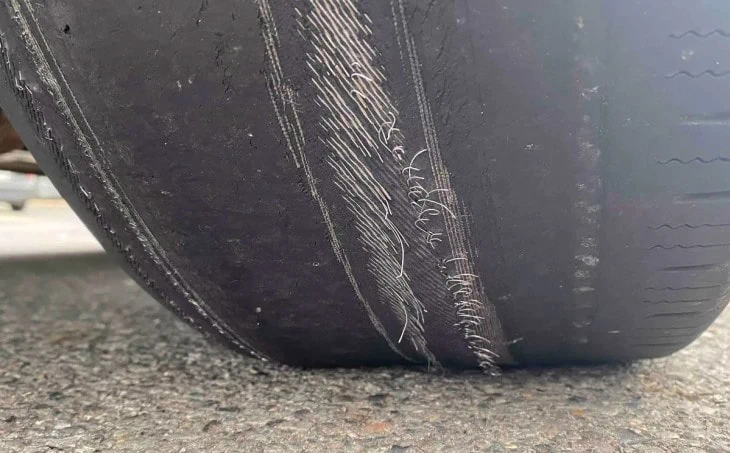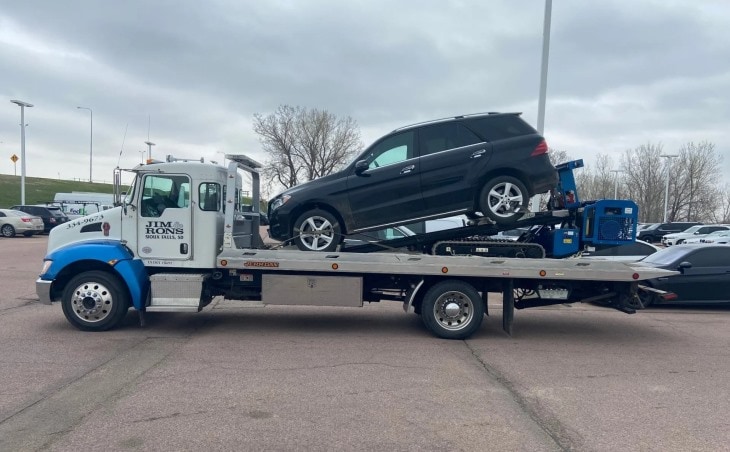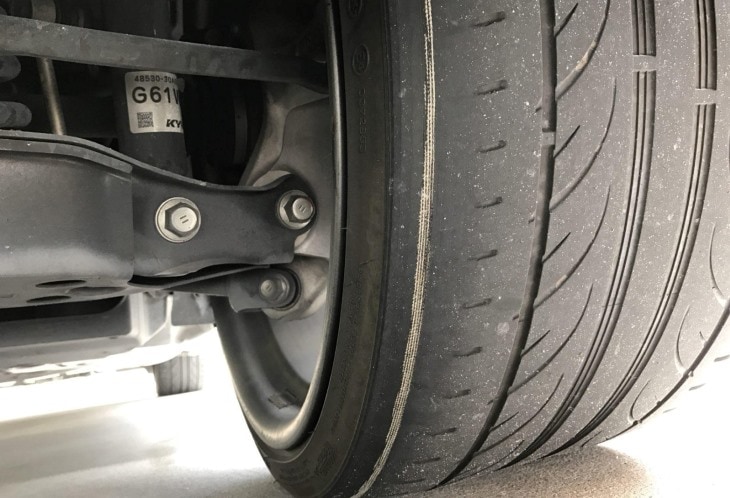In a nutshell, it is generally a very bad idea to continue driving your vehicle as normal when you have noticed that your tire has worn so bad that its structural cords have appeared on its suffice.
Still, how far can you go like that? Can you salvage the affected tire? I’ll discuss these and more relevant points below.
Table of Contents
Why is It a Bad Idea?

First, let’s start with the fact that it is quite dangerous to continue driving even when you ‘just’ have no visible tire tread on any part of the tire’s contact surface. Yes, F1 cars or NASCAR machines do use treadless slick tires, but they are built differently than road tires.
You see, every tire has different layers of rubber with different physical properties that serve a unique purpose. The layer underneath the treads is more of a structural layer that also serves as a shock and vibration absorbent.
It is not as resistant to frictional wear, and it doesn’t have enough traction capabilities to ensure driving safety (not to mention the fact that with no treads, the water and mud have nowhere to go, further limiting already bad traction properties).
And since that inner layer is less resistant to frictional wear, it won’t take long for it to wear so severely that the elements of the metal cord tire structure will show up on the surface.
This situation is much more dangerous because the metal cords are even less resistant to frictional wear than the inner layer of rubber. And if the metal cords get weakened, it can result in the full disintegration of the tire, which can be extremely dangerous on the open road.
But Can You Still Drive, Though?
Of course, there’s no magic spell that would stop you from driving on seriously worn tires, and they probably won’t blow up on you the second you notice the metal threads showing.
However, you should use it as a sign to get to the tire shop as soon as possible and swap your worn tires either for a brand-new set or a set that is in good condition.
Some sources claim that you have another 80 to 100 miles when you have noticed the steel cords showing on the tire surface. But I wouldn’t toy with the idea of driving as usual, simply from the fact that you cannot be sure for how long it’s been there before you have noticed it.
The more you drive on worn tires, the more you increase the risk of something bad happening. And the thing is, it’s impossible to calculate when exactly it is going to happen, as the materials from inside the tire don’t wear in a predictable manner to make any solid prognoses.
So, in short, get to the tire shop as soon as possible!
Dealing With This When Away from Home / a Tire Shop
What to do if this tire situation has caught you off guard when you are away from home?
If you’ve found yourself in this tire situation where you are away from your hometown on your own, don’t panic.
Consider Your Options First

Keep in mind that you have no more than 80 to 100 miles of relatively safe range in this sort of situation.
Try to find out where the nearest tire shop is. You can pull up Google Maps on your phone or ask the locals.
If the tire shop is farther away than 100 miles, you should seriously consider calling a tow truck.
But when you have an urgent meeting that is nearby, you can carefully drive there and call a tow truck afterward.
Precautionary Measures You Should Take
The most important and effective safety measure you can take is to drive as slow as possible without irritating the traffic.
You can put your hazard lights on to let the people around know that you are driving cautiously because you’re experiencing some trouble with your car.
The point of driving slower is not to ensure a longer lifespan of your damaged tires or to prevent them from blowing up. The chance of tire disintegration remains the same.
It’s just that with lower speed, the car has less of an impulse and less inertia, which ensures sufficient enough control and traction if the worst were to happen.
If the tire would blow up on you at speed, you would completely lose control, which could lead to an accident. But with the lower speed, you would probably retain control of your vehicle; and if the accident were to take place, there would be fewer or less severe consequences.
So, it doesn’t hurt to keep the chances of anything bad happening as low as possible.
Can the Tire with Visible Threads be Salvaged?

I think it’s pretty self-explanatory that if the reason the threads have appeared is severe wear of tire tread, there’s no way around it but to change the tires.
And even if, in the very unlikely scenario, you see the threads, but the tread is still good all around the tire, it still should be replaced. In such a case, the visible metal threads are an indicator that the tire integrity has been compromised, possibly after a severe impact or puncture.
So yes, if you see the metal cord structure, the only solution is to replace the tire.
Why is It Happening and How to Prevent It?
Well, of course, it wouldn’t hurt if you would change your tires on time. But what if they wear unevenly?
You shouldn’t forget to rotate your tires once every five thousand miles. Find out how to do that properly in your car’s user manual. You can also get it done at places like Jiffy Lube, Discount Tire, Firestone and even Walmart, for a rather low price of around $20-60.
And always monitor your tire pressure, it should be up to OEM spec. Improper tire pressure leads to uneven and accelerated tire wear, which can result in wear so severe that the steel threads will show up.
But if you have been doing everything mentioned above and still get unevenly worn tires, this could be a sign of a suspension misalignment problem.
The misalignments in the suspension system can happen due to a plethora of reasons, ranging from an improper installation of suspension components, worn suspension components, or even structural damage to the frame of the vehicle.
In that case, you should visit a repair shop for a proper diagnosis.
